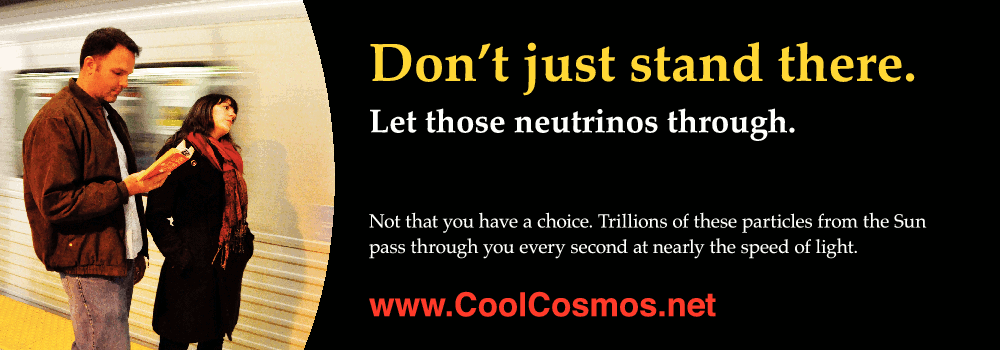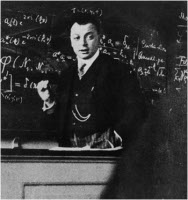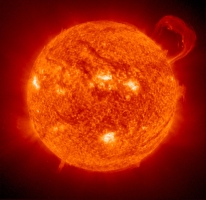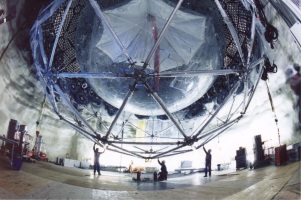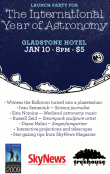![]() Listen to one Toronto astronomer talk about his interest in neutrinos and exploding stars.
Listen to one Toronto astronomer talk about his interest in neutrinos and exploding stars.
Neutrinos may sneak by unnoticed but we couldn't survive without them. They are the secret behind how the stars shine and their bizarre properties are connected to the hidden nature of our universe.
Imagine a baseball game in a ballpark larger than our solar system. The bases are billions of kilometres apart. When someone hits a ground ball the chances are almost zero that an infielder will be able to stop it. There's just too much ground to cover. That's how neutrinos accomplish the trick of passing through solid matter. They are immune to the forces that bind other particles into atoms and molecules. With so little to draw them to other particles, they can sail straight through an entire planet as though it wasn't there.
In 1930, the physicist Wolfgang Pauli was the first to suggest that neutrinos exist. He was looking for some way of explaining why certain kinds of particle interactions produce less energy than they should. Pauli said an unknown particle – the neutrino – must be responsible for carrying away the missing energy. He also said that inventing a particle that no one could detect to solve the problem was a "desperate remedy". The radical idea was accepted anyway because it worked so well, and neutrinos were finally detected in 1956, streaming out of a nuclear reactor.
By then scientists were starting to get a handle on all kinds of nuclear reactions including the crucial reactions that power our Sun. They calculated that neutrinos should play an essential role in those reactions and in carrying a portion of the Sun's energy straight into space. Because they pass through the rest of the Sun very easily these "solar" neutrinos should provide a useful way to measure directly what is happening in the Sun's core.
The first solar neutrinos were detected in an elaborate experiment involving a giant tank of cleaning fluid at the bottom of a gold mine (neutrino experiments are often located deep in mines to shield them from cosmic rays). This was a great achievement but it was also the beginning of a serious problem because the experiment kept coming up short. Later experiments showed the same thing – some of the Sun's neutrinos seemed to be missing.
The mystery was finally laid to rest with the construction of the Sudbury Neutrino Observatory in Sudbury, Ontario. This landmark experiment showed that under the right conditions neutrinos can switch from one type into another. That is how some solar neutrinos escaped detection in earlier experiments – they were switching into types of neutrinos those experiments weren't designed to detect. This result means that neutrinos can behave in ways that are not predicted by the current theory of particle physics. It's one more piece of evidence that a more complete theory is still waiting to be discovered.
Meanwhile, astronomers are hoping that one day all the working neutrino experiments on Earth will suddenly light up. This would indicate that a huge wave of neutrinos has swept past our planet – a sure sign that a supernova has exploded somewhere in our Milky Way galaxy.
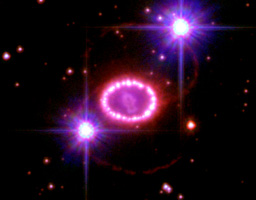
The aftermath
of supernova 1987a as seen by the Hubble Space Telescope. Credit:
NASA, ESA, and R. Kirshner (CfA Harvard).
A supernova is the explosive death of a massive star. It is one of the rarest, most energetic and most intensely studied phenomena in nature. In 1987, a supernova discovered by Ian Shelton of the University of Toronto was preceded by a burst of neutrinos. It was located in a neighbouring galaxy to the Milky Way. If we're lucky enough to witness a supernova explode much closer, it's expected that many more neutrinos will be detected on Earth. The neutrinos will provide crucial information about the details of the supernova explosion and alert astronomers to start looking before the supernova is even visible.
Select another story to learn more about how you are connected to the cosmos!







